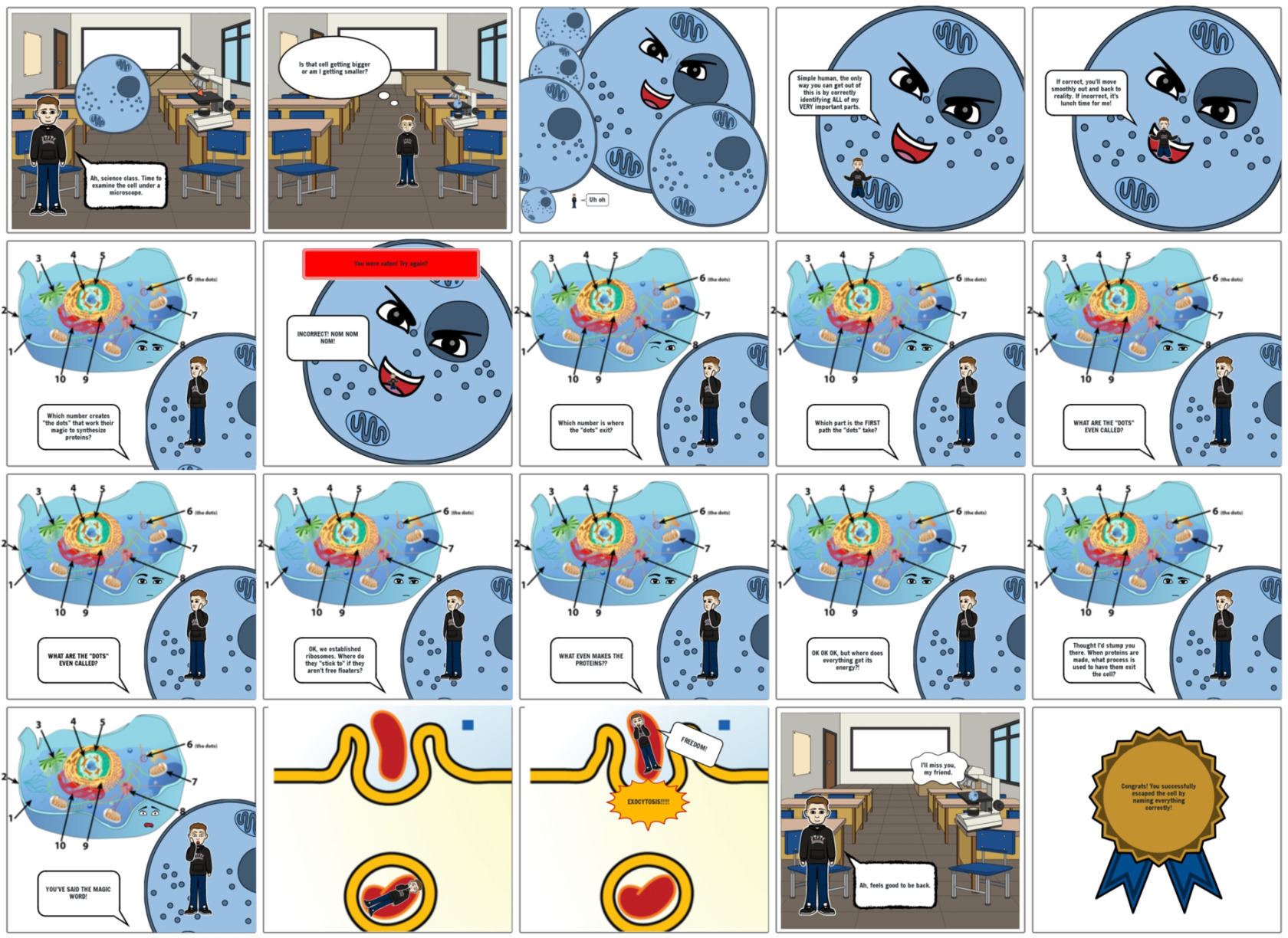Created by Alyssa
Gamification with Articulate Storyline
Curated a game for science students learning the parts of the cell and cellular transport. The premise of this game is based on a student scenario in a high school science classroom.
This aligns with the following learning goal: “students will develop an understanding of the cell”. Instructors can use this game to test the knowledge of student’s skill with organelles and with cellular transport. Students can use this game to see if they are able to get them all correct the first time.
Audience
10th grade high school students ranging in ability including ESE, ESOL, and Gifted students.
Theory
Game-Based Learning/ Gamification
Tools Used
Process
Game Story
The premise of this game is based on a student scenario in a high school science classroom. The backstory involves a student who is examining cells under a microscope and gets mysteriously shrunken down and stuck inside of the cell. The student must navigate correctly throughout the cell in order to escape and grow back to normal size. The student has to identify the major organelles involved within the endomembrane system and transport of proteins. The student will have successfully learned about the cell membrane and transport by now, and this prior knowledge has been integrated into the game as well.
Game Rules
Storyboarding

Based in Theory
Cognitivism
Constructivism
Gamification
More Projects
Microlearning – Nearpod
Created by AlyssaMicrolearning on NearpodThis training focuses on energizers from the Bob Pike Group. Energizers are a specific type of engagement strategy. Strategies are based on Bob Pike trainings I have attended focusing on facilitating to adult learners. The...
Curriculum Development – Canvas
Created by AlyssaCurriculum Development Using Canvas LMSCreated a personalized learning experience for students including playlists, remediation, and enrichment. Since cognitive learning theory and strategies are essential to the fundamentals of lifelong learning, I...
Instructional Design – Articulate Rise 360
Created by AlyssaInstructional Design on Articulate Rise 360Goal: In this course, learners will gain an understanding of the TDIF Grant application process. By the end of this course, 100% of qualified teachers will be able to submit a TDIF Grant application for...
Learn More
About Me
Result-oriented and innovative Project Manager with 8+ years of experience in education, blending expertise in curriculum development, project management, and instructional design. Adept at establishing clear lines of communication with stakeholders, ensuring informed decision-making and successful project outcomes.


Created by Alyssa
Bringing your vision to life.
Links
Home
About Me
Categories
Instructional Design
Project Management
Graphic Design
